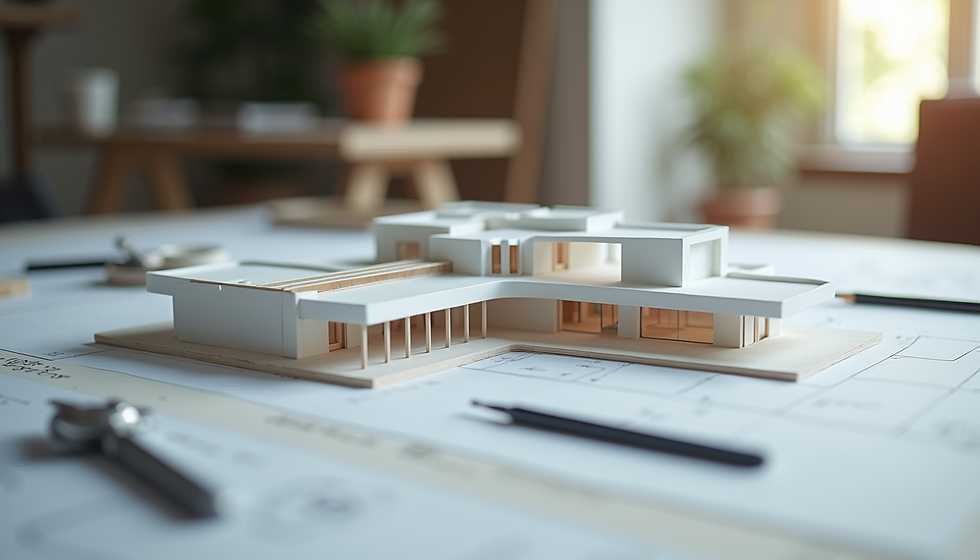What Are the Leading Architecture Project Management Tools That Will Shape the Industry in 2025?
- Mathew Kaplan
- Apr 10
- 4 min read

The AEC industry is on the brink of a technological revolution as we near 2025. With increasing project demands, firms are seeking tools that not only boost efficiency but also enhance collaboration. This need drives the development of powerful project management solutions. This post dives into the leading tools set to redefine architecture project management, showcasing their key features and the innovative trends pushing the industry forward.
Overview of Leading Architecture Project Management Tools
Deltek Vantagepoint
Deltek Vantagepoint is a robust tool designed specifically for architecture firms. Its strengths lie in:
Project Tracking: Keep projects on schedule while maintaining cost efficiency.
Resource Management: Optimize your team’s time based on data-driven insights. For instance, firms using Vantagepoint report a 20% reduction in resource overallocation.
Financial Management: Monitor and manage expenses effectively, ensuring projects remain within budget.
The integration of AI helps firms predict project needs, enhancing planning accuracy. In addition, real-time collaboration features enable teams to remain aligned, keeping budgets and milestones on track.
Monograph
Monograph simplifies architecture project management with a focus on:
Centralized Operations: Manage project timelines, time tracking, and invoicing all in one place, saving firms up to 15 hours per week in administrative tasks.
Customization: Users can easily tailor workflows to match their processes, leveraging low-code functionalities.
BIM Integration: Streamline design collaboration with tools that connect seamlessly to building information modeling.
Monograph empowers firms to make informed decisions by providing clear project insights.
Newforma Konekt
Newforma Konekt is built to enhance communication among project teams through:
Document Management: Organize and access project documents efficiently, reducing time spent searching by up to 30%.
Mobile Access: A user-friendly mobile app ensures that team members can collaborate anytime, anywhere.
Scalability: Works effectively for both small teams and larger organizations, without compromising usability.
AI-powered automation in document management frees architects to focus on their creative work rather than administrative duties.
Asana
Asana is a versatile tool suitable for architecture workflows, offering:
Task Management: Organize tasks and track progress with a straightforward interface that leads to quicker team onboarding.
Integration Flexibility: Connect with design software to improve project tracking and accountability.
With over 100,000 organizations using Asana, its adaptable features support a range of project types, making it a suitable choice for diverse architectural needs.
ClickUp
ClickUp consolidates:
Task Management: Simplify task prioritization and streamline goal tracking.
Document Sharing: Keep all project information in one place to enhance collaboration among team members.
Its user-friendly platform, combined with AI enhancements, promotes better efficiency, allowing firms to reduce project execution time by 25%.
BQE CORE
BQE CORE provides a comprehensive solution for:
Project Management and Accounting: Streamline your workflow with integrated project tracking and financial management.
Smart Invoicing: AI capabilities help automate expense reports, ensuring that your financial reporting is accurate and timely.
The platform integrates with major design software to facilitate seamless collaboration between architects and engineers, enhancing overall productivity.
Smartsheet
Smartsheet is an intuitive tool for managing complex projects, featuring:
Gantt Charts: Visualize project timelines and dependencies clearly, improving project management clarity.
Budget Tracking: Monitor financial resources effectively, which is particularly useful for projects where budget overruns are common.
With AI-driven data analytics, firms can improve decision-making, ultimately leading to a more successful project completion rate.
Trello
Trello is a straightforward project management platform known for its:
Task Collaboration: Utilize boards, lists, and cards to manage tasks effectively without feeling overwhelmed.
Customization: Users can adjust workflows to meet their teams' needs, ensuring that everyone stays on the same page.
Though it may seem basic, Trello remains popular due to its simplicity and ability to facilitate communication among various stakeholders.
Comparison of Traditional Architecture-Specific Platforms with Next-Gen Solutions

Traditional architecture-specific tools often fall short in flexibility and integration. While they focus on compliance and design, next-gen solutions prioritize collaboration and automation.
These modern platforms, designed with cloud technology, emphasize:
Advanced AI Integration: This enhances collaboration through data-driven insights.
Compatibility with BIM and CAD: As seamless integration with these tools becomes the standard, firms can better visualize projects and enhance team communication.
Modern solutions provide a better user experience and greater adaptability, paving the way for streamlined project management in an evolving industry landscape.
Trends Influencing Architecture Project Management Tools in 2025
As we head towards 2025, several key trends are shaping the selection of architecture project management tools:
AI-Assisted Scheduling: Tools like BQE CORE integrate AI to significantly enhance resource allocation and project timeline forecasting.
BIM and CAD Integration: Expect to see more tools connecting seamlessly with these technologies to improve collaboration and streamline efforts.
Data Analytics for Forecasting: Advanced analytics will boost firms' abilities to predict costs and timelines more accurately, reducing budget overruns by about 15%.
Cloud-Based Collaboration: The shift to cloud solutions simplifies real-time team collaboration, enhancing overall project efficiency.
Remote and Hybrid Work Adaptation: Software must support collaboration, regardless of team members' locations, helping foster a cohesive work environment.
Advice for Small to Midsize Architecture Firms

For small to midsize architecture firms (5 to 25 employees), evaluating project management tools should involve several considerations:
Firm Size: Look for tools that scale easily, adaptable to your team's growth and changing project needs.
Collaboration Requirements: Choose platforms that promote effective communication, enhancing workflow efficiency.
Tech Comfort: Ensure tools are user-friendly, with low-code options preferred for teams with varying levels of technical expertise.
Alignment with Business Goals: Tools should match your strategic objectives, whether enhancing profitability or improving project management efficiency.
Final Thoughts
The architecture sector is evolving rapidly, and the demand for sophisticated project management tools is set to rise. A firm grasp of the features, scalability, and integration capabilities will help you make informed decisions. By focusing on emerging trends and assessing your unique needs, your firm can leverage these tools to excel in a competitive landscape as 2025 approaches.




Comments